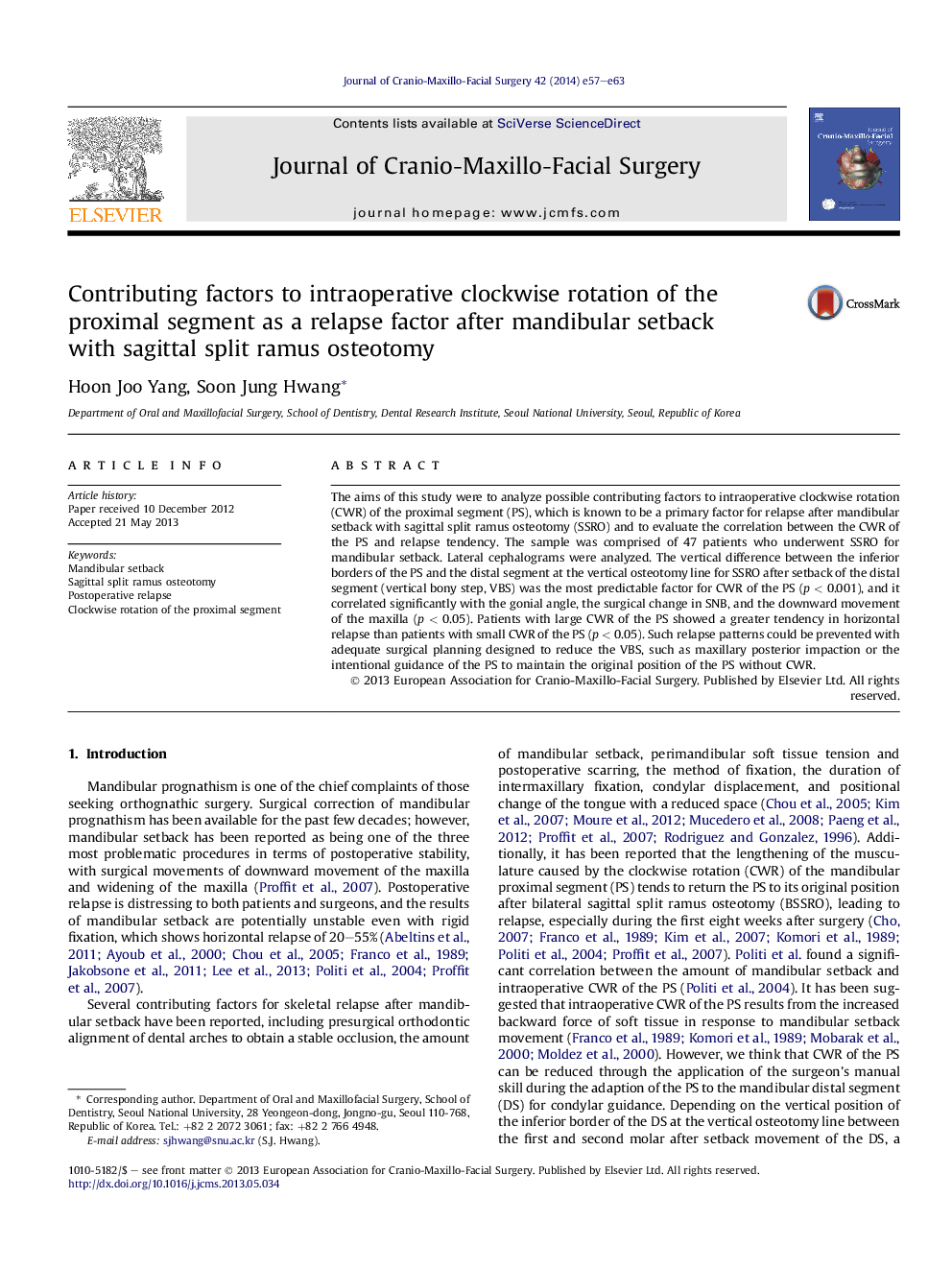| Article ID | Journal | Published Year | Pages | File Type |
|---|---|---|---|---|
| 3142670 | Journal of Cranio-Maxillofacial Surgery | 2014 | 7 Pages |
The aims of this study were to analyze possible contributing factors to intraoperative clockwise rotation (CWR) of the proximal segment (PS), which is known to be a primary factor for relapse after mandibular setback with sagittal split ramus osteotomy (SSRO) and to evaluate the correlation between the CWR of the PS and relapse tendency. The sample was comprised of 47 patients who underwent SSRO for mandibular setback. Lateral cephalograms were analyzed. The vertical difference between the inferior borders of the PS and the distal segment at the vertical osteotomy line for SSRO after setback of the distal segment (vertical bony step, VBS) was the most predictable factor for CWR of the PS (p < 0.001), and it correlated significantly with the gonial angle, the surgical change in SNB, and the downward movement of the maxilla (p < 0.05). Patients with large CWR of the PS showed a greater tendency in horizontal relapse than patients with small CWR of the PS (p < 0.05). Such relapse patterns could be prevented with adequate surgical planning designed to reduce the VBS, such as maxillary posterior impaction or the intentional guidance of the PS to maintain the original position of the PS without CWR.
